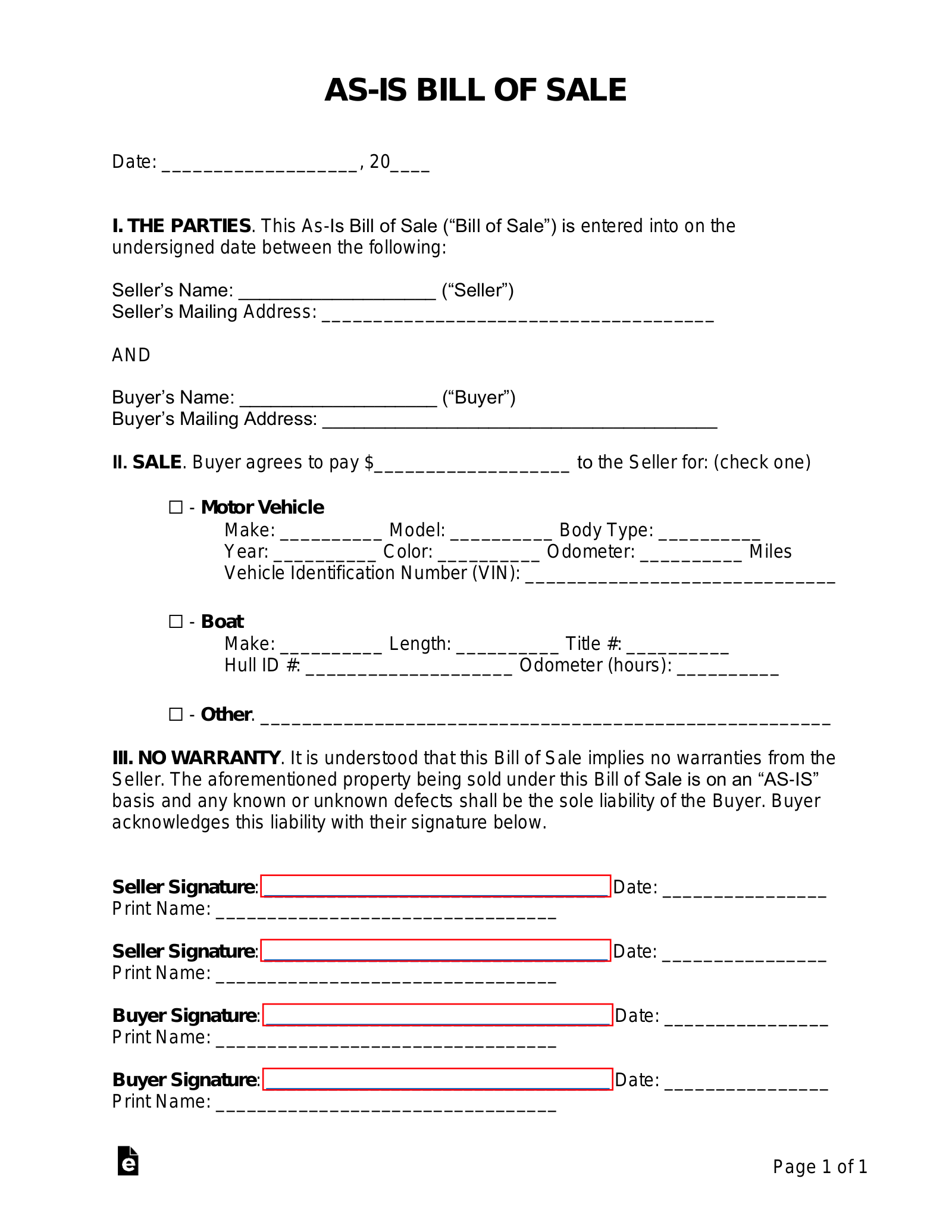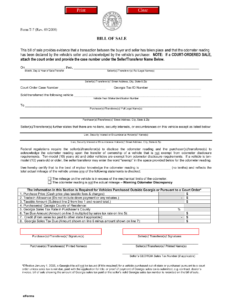Selling a vehicle privately can be an exciting prospect, but it also comes with its fair share of responsibilities and potential pitfalls. Whether you’re upgrading to a newer model or simply need to free up some driveway space, ensuring a smooth and legally sound transfer of ownership is paramount. This isn’t just about handing over keys and receiving cash; it’s about protecting both yourself and the buyer from future disagreements.
One of the most crucial documents in any private vehicle sale is a comprehensive bill of sale. It acts as a legal record of the transaction, outlining all the agreed-upon terms. But what if you’re selling your car “as-is” and want to avoid any come-back claims about its condition? That’s where a specific type of document comes into play: a vehicle bill of sale no warranty template.
Why You Absolutely Need a Bill of Sale for Your Vehicle Transaction
When you sell a vehicle, you’re not just transferring a piece of machinery; you’re transferring legal ownership. A well-drafted bill of sale serves as irrefutable proof of this transfer. Imagine a scenario where the buyer drives off, gets a parking ticket, and it’s still registered to you. Without a bill of sale, proving you’re no longer the owner can be a bureaucratic nightmare. It protects you from liability for anything that happens to the vehicle after the sale, from traffic violations to accidents.

For the buyer, the bill of sale is equally vital. It’s their proof of purchase, essential for registering the vehicle in their name, obtaining new license plates, and sometimes even for insurance purposes. Without this document, they might face significant hurdles at the Department of Motor Vehicles or equivalent authority. It establishes their legal claim to the vehicle and allows them to complete all the necessary post-purchase steps.
Perhaps one of the most significant advantages, especially for the seller in a private transaction, is the “no warranty” clause. When you sell a used vehicle, you typically don’t want to be responsible for any mechanical issues that might arise a week or a month down the line. A standard bill of sale might not explicitly state that the vehicle is sold “as-is,” meaning the buyer might later claim you misrepresented its condition or demand repairs. A specifically designed vehicle bill of sale no warranty template makes it abundantly clear that the buyer is accepting the vehicle in its current state, with all its existing faults, and that you are providing no guarantees about its future performance or condition.
By utilizing a robust template, you ensure that this critical “as-is” declaration is properly included and legally binding. This minimizes your risk and provides peace of mind, knowing you’ve done your due diligence in transparently transferring the vehicle without future liability for its condition. It’s about setting clear expectations for both parties and ensuring a fair transaction.
Key Elements to Safeguard Your Sale
- Seller and Buyer Information: Full legal names, addresses, and contact details for both parties.
- Vehicle Description: Comprehensive details including make, model, year, VIN (Vehicle Identification Number), odometer reading, and color.
- Sale Price and Payment Method: Clearly state the agreed-upon sale price and how the payment was made (cash, certified check, etc.).
- Date of Sale: The exact date the transaction occurred.
- “As-Is” Clause: A clear, explicit statement that the vehicle is sold “as-is, where-is” with no warranties, express or implied. This is the cornerstone of a no-warranty bill of sale.
- Signatures: Signatures of both the buyer and seller, and ideally, a witness or notary public, to further legitimize the document.
Crafting Your No-Warranty Bill of Sale: Essential Inclusions
While the concept of a bill of sale seems straightforward, the devil is often in the details. A truly effective no-warranty bill of sale goes beyond just basic information. It needs to meticulously document every pertinent detail of the transaction to leave no room for ambiguity. This attention to detail is what transforms a simple receipt into a powerful legal instrument that protects both parties, but especially the seller from post-sale disputes.
Start with the basics: identifying information for both the seller and the buyer. This includes their full legal names, current addresses, and contact numbers. This ensures that all parties involved are clearly identified. Next, you need to provide a thorough description of the vehicle itself. This means listing the make, model, year, and crucially, the Vehicle Identification Number (VIN). The VIN is unique to each vehicle and acts as its fingerprint, preventing any confusion about which specific vehicle was sold. Also include the current odometer reading at the time of sale, as this is often a point of contention later if not properly documented.
The absolute core of a “no warranty” bill of sale is the explicit “as-is” clause. This statement informs the buyer that they are purchasing the vehicle in its current condition, with all its existing faults, whether known or unknown. It specifies that the seller makes no guarantees or warranties, express or implied, regarding the vehicle’s mechanical condition, performance, fitness for a particular purpose, or future longevity. This clause is what shields the seller from liability for repairs or issues that may arise after the transaction is complete. Without this specific wording, even if you verbally said “as-is,” you could still be held responsible in some jurisdictions.
Finally, the document must include the agreed-upon purchase price, the date of the sale, and clear spaces for the signatures of both the buyer and the seller. It’s also highly recommended, though not always legally required, to have the document signed in the presence of a witness or notarized. This adds an extra layer of authenticity and makes it much harder for either party to later claim they didn’t sign or agree to the terms. Remember, a physical copy for both parties is essential, perhaps even a third for your records or to submit to authorities if required.
Having a properly executed bill of sale provides a strong foundation for your vehicle transaction. It offers legal clarity and peace of mind for both the buyer and the seller. By taking the time to complete this essential document thoroughly, you are ensuring a smooth and transparent transfer of ownership, minimizing the potential for future headaches or disputes.
Don’t overlook the importance of this simple yet powerful document. It’s your best defense and the buyer’s best assurance, all wrapped up in one clear agreement. A little preparation now can save a lot of trouble down the road.



